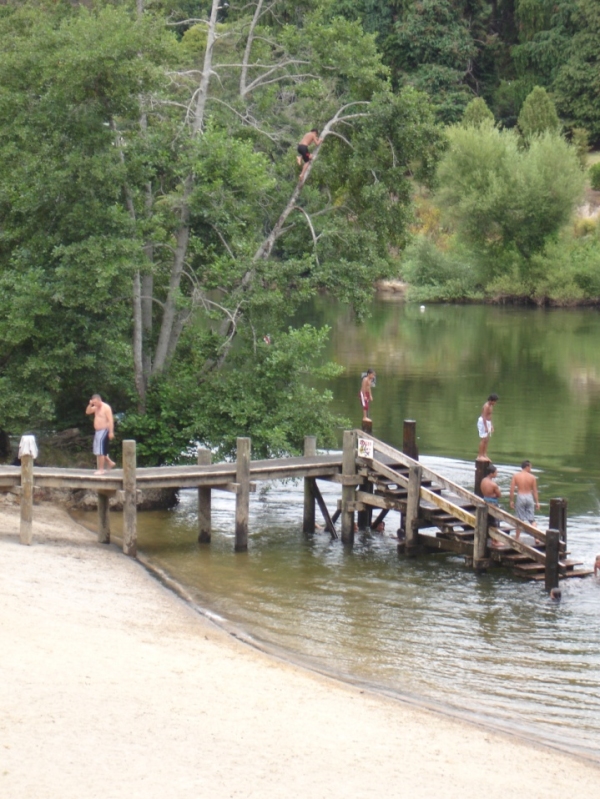Many of New Zealand's aquatic ecosystems, and their services, are in a degraded and often worsening state. This is a matter of great public concern and threatens our national 'clean-green' branding. NIWA is involved in research and consultation' aimed at improving the health of our freshwater systems.
The problem
The Waikato is New Zealand's longest river, at around 425 km. Its 14,260 km2 catchment includes over 17,000 km of tributary streams, Lake Taupō, eight hydro-electric dams and several large lowland lakes and wetlands.
Together these comprise a highly varied aquatic ecosystem that supports a rich and diverse culture and economy.
Te Ture Whaimana, the Vision and Strategy for the Waikato River, recognises that the river is 'seriously degraded over much of its length'.
This document outlines the vision for a future where a healthy Waikato River sustains abundant life and prosperous communities who, in turn, are all responsible for restoring and protecting the health and wellbeing of the Waikato River, and all it embraces, for generations to come.
Broad acceptance and shared ownership by iwi, community, business and regional and local councils is essential to achieving the overall vision of Te Ture Whaimana for a healthy and well Waikato River. Without this shared commitment the process of change and activities needed to implement it will be resisted.
The solution
In 2009 a multi-disciplined team led by NIWA was commissioned to complete a project - the Waikato River Independent Scoping Study - as identified in the Waikato-Tainui Deed of Settlement to:
- Identify priority actions and associated costs of those actions, necessary to rehabilitate the health and wellbeing of the Waikato River and its tributaries, wetlands and lakes for future generations.
- Provide background information useful to the establishment and operation of the Waikato River Authority and the Waikato River Clean-up Trust.
Read the Waikato-Tainui Deed of Settlement
The study integrated mātauranga Māori and science knowledge systems to provide a sound and objective platform for decision making. In addition to the involvement of Waikato River iwi, the Guardians Establishment Committee and the Ministry for the Environment the project team was comprised of scientists, social scientists, farming system specialists, economists, engineers and planners from NIWA, Tipa and Associates, AgResearch, Beca, Diffuse Sources Limited, Enveco, Nimmo-Bell & Company Limited, and Market Economics Limited.
The study team were asked to recommend a list of bold and innovative priority actions, which together would lead to the restoration of the health and wellbeing of the Waikato River. A variety of engagement models, analysis methods and modelling approaches were used to derive 60 recommended priority actions, that were also packaged in different ways to produce three 'scenarios' or alternative views of the future. The costs, benefits and co-benefits of restoring key cultural, environmental and social values, and the overall effects on both the Waikato region and New Zealand economy over a 30-year duration were analysed.
The result
The Waikato River Independent Scoping Study recommended a list of over 60 priority actions and covered a range of topics, including:
- governance
- engagement
- farming systems (dairy and dry stock)
- point source discharges
- public health
- access
- fisheries, kai, and taonga species
- lakes restoration
- protection.
A potential monitoring and evaluation framework in the form of Report Cards was also developed during this study. Report Cards are a tool that can be used to summarise and communicate large amounts of complex monitoring information in a robust, defensible, transparent, clear and user-friendly way.
A co-management entity called the Waikato River Authority, with 50:50 Crown: Māori membership, is a statutory body formed under the Waikato-Tainui Raupatu Claims (Waikato River) Settlement Act 2010 and the Ngati Tuwharetoa, Raukawa, and Te Arawa River Iwi Waikato River Act 2010. The recent enactment of the Nga Wai o Maniapoto (Waipa River) Act 2012 extends the Authority's area to the whole of the Waipa River catchment.
The Authority is the sole trustee of the Waikato River Clean-up Trust whose role is to administer and distribute a contestable clean-up fund, with the Government committing $220 million over a 30-year period, to work towards the restoration and protection of the health and wellbeing of the Waikato River for present and future generations.
Download
Waikato River Independent Scoping Study (WRISS) Final Report



